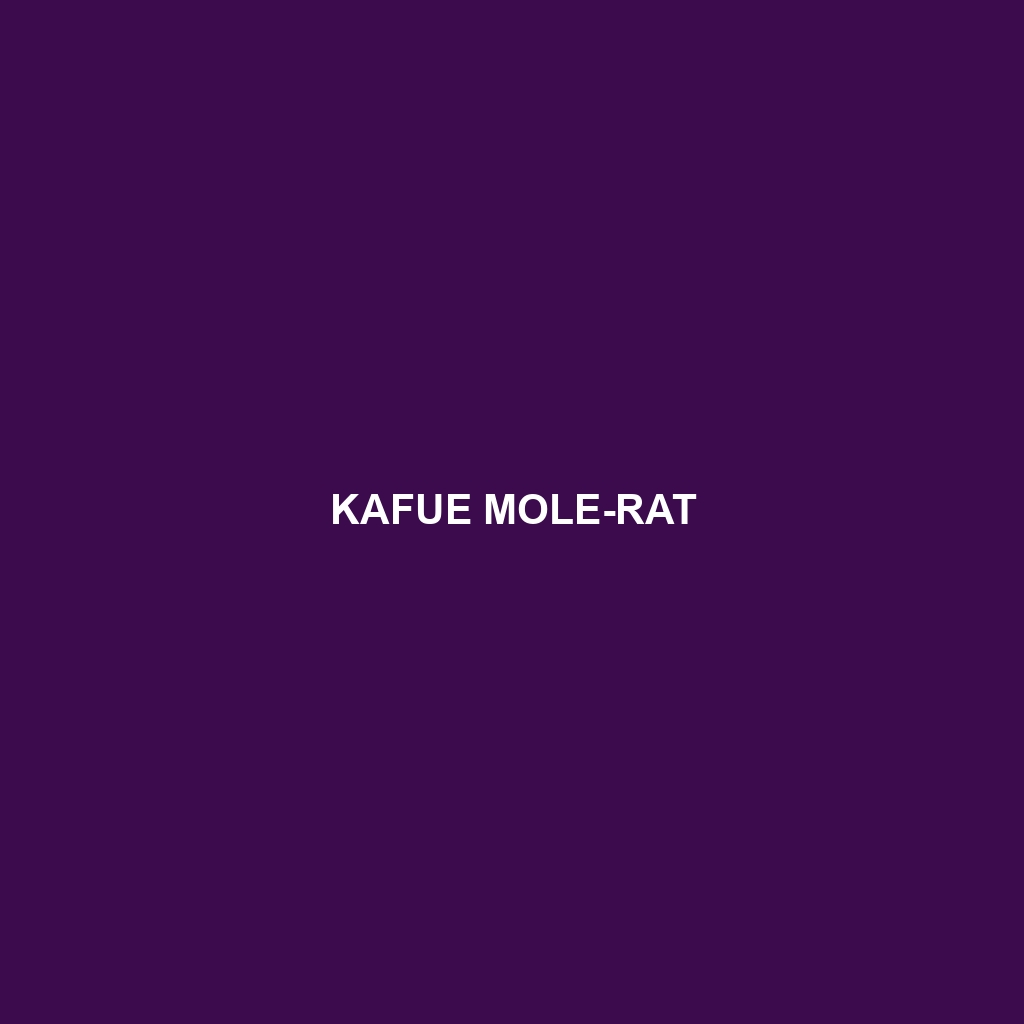Kafue Mole-rat: A Comprehensive Species Description
Common Name: Kafue Mole-rat
Scientific Name: Fukomys ansell
Habitat
The Kafue Mole-rat is primarily found in the Kafue Flats region of Zambia, particularly thriving in grassland and wetland ecosystems. It typically inhabits moist, fertile soils that facilitate burrowing and foraging. The species is well-adapted to its environment, favoring areas with abundant vegetation and minimal human disturbance.
Physical Characteristics
Kafue Mole-rats are medium-sized rodents, usually measuring approximately 20 to 30 cm in length. They exhibit a distinctive hairy, brownish-gray coat, which aids in camouflage within their natural habitat. Their elongated bodies, short legs, and robust limbs are particularly adapted for digging. Notably, they possess large, pronounced incisors that are essential for burrowing and foraging for food.
Behavior
The Kafue Mole-rat is a solitary and fossorial species, spending most of its life underground. These mammals are known for their extensive burrowing habits, creating complex tunnel systems. They exhibit a unique social structure and can be seen engaging in cooperative behaviors, particularly during foraging and nest-building. Their largely nocturnal lifestyle helps them avoid daytime predators and extreme temperatures.
Diet
Kafue Mole-rats are primarily herbivorous, feeding on roots, tubers, and grass. Their diet is supplemented with a variety of other plant materials, allowing them to thrive in their wetland habitats. They utilize their strong incisors to gnaw through tough plant matter, demonstrating remarkable adaptability in sourcing food even in challenging conditions.
Reproduction
The reproductive habits of the Kafue Mole-rat are intriguing, as they typically breed during the wetter months from October to April when food is abundant. A female can give birth to a litter of 2 to 6 young after a gestation period of approximately 4 weeks. Offspring remain with their mother for several weeks, learning essential survival skills before becoming independent.
Conservation Status
Currently, the Kafue Mole-rat is classified as “Near Threatened” by the IUCN. Habitat loss due to agricultural expansion and human encroachment poses significant threats to their populations. Conservation efforts are necessary to protect this unique species and its habitat from further degradation.
Interesting Facts
– Kafue Mole-rats have a unique adaptation known as “eusocial behavior,” similar to that of naked mole-rats, wherein certain individuals may assist in caring for younger members of their population.
– Their burrowing activities play a crucial role in soil aeration and nutrient cycling within their ecosystem.
Role in Ecosystem
As crucial members of their ecosystem, Kafue Mole-rats contribute to soil health through their digging activities. They assist in the dispersal of plant seeds and maintain the structure of the grassland habitat. Additionally, their presence supports various predator species, thereby forming an integral part of the food web within their environment.
